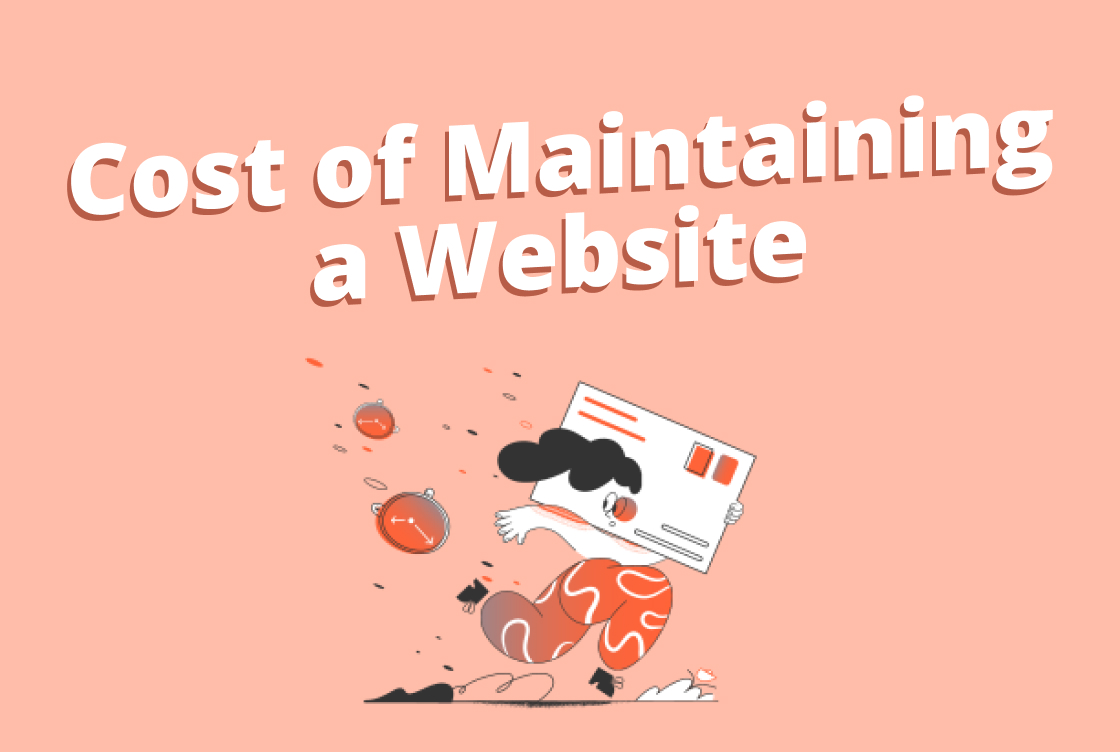The cost of maintaining a website can vary widely depending on the size and complexity of the site, as well as the resources and expertise required to keep it up to date-and functioning properly. Some of the factors that can impact the cost of maintaining a website include the following:

Hosting
The cost of hosting a website can range from a few dollars per month for a basic shared hosting plan to hundreds or even thousands of dollars per month for a dedicated server or managed hosting solution.
Domain Registration
Depending on the domain extension and the provider, the cost of registering a domain name can range from a few dollars per year to several hundred dollars per year.
Content updates
If your website requires frequent updates to its content, you may need to hire a web developer or writer to handle these updates. The cost of these services will depend on the complexity of the updates and the hourly rate of the individual or company performing the work.
Design updates
If you need to make changes to the design or layout of your website, you may need to hire a web designer or developer to handle these updates. The cost of these services will depend on the complexity of the updates and the hourly rate of the individual or company performing the work.
Security
Ensuring that your website is secure and protected against cyber threats can involve a range of measures, such as installing security software, monitoring for vulnerabilities, and implementing security updates. The cost of these measures will depend on your actions and the tools and services you use.
Overall, the cost of maintaining a website can range from a few hundred dollars per year for a small, static website to several thousand dollars per month for a large, complex website with frequent updates and a high level of security.

There are several options for building a website for free using a website builder. Here are a few examples:
WordPress.com: WordPress is a popular content management system (CMS) that allows users to create and manage a website easily. The WordPress.com platform offers a free version with a customizable website builder and basic features such as a domain name, storage, and security.
Wix: Wix is a website builder that offers a range of templates and drag-and-drop design tools to help users create a professional-looking website without coding knowledge. Wix offers a free plan with a subdomain, storage, and primary features.
Weebly: Weebly is another website builder that offers a range of templates and design tools to help users create a professional-looking website. The platform offers a free plan with a subdomain, storage, and primary features.
Google Sites: This is a free website builder part of the Google Workspace suite of productivity tools. It offers a range of templates and design tools to help users create a simple website quickly and easily.
Remember that while these free website builders offer a range of features and tools, they may also include limitations or restrictions, such as limits on storage or bandwidth or limitations on using custom domains. In addition, free website builders may display ads on your website or require you to upgrade to a paid plan to access certain features.
Can a link in bio website replace a website?
A link in your bio on a social media platform such as Instagram or Twitter can be a valuable way to direct users to a specific webpage. Still, it is not a replacement for an entire website. A website gives you more control over the content and design of your online presence. It allows you to add more features and functionality beyond what is typically possible with a social media bio link.
A website can also help you establish your brand and credibility, providing a more professional and comprehensive online presence. In addition, a website can be a valuable marketing and communication tool, allowing you to share information about your products or services, promote events or specials, and interact with customers and visitors.
While a link in your social media bio can be a valuable addition to your online presence, it should not be the only way you represent your business or organization online. It is generally a good idea to have a standalone website in addition to any social media profiles you may have.

